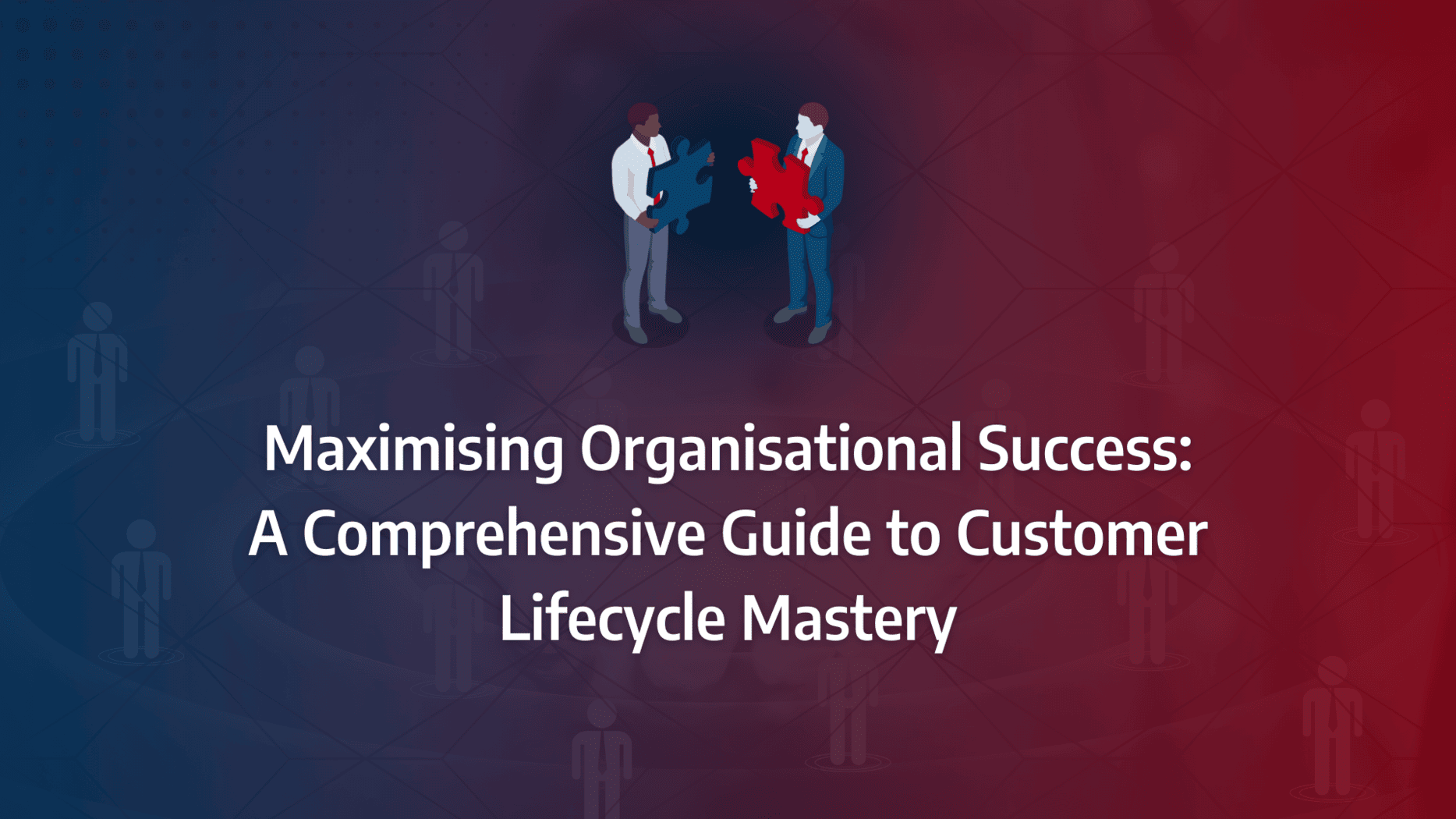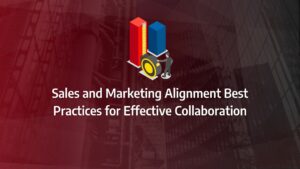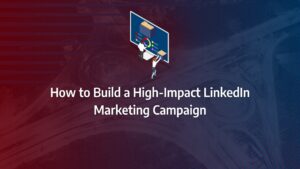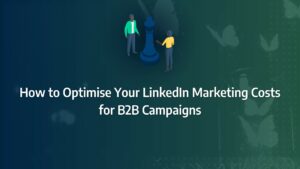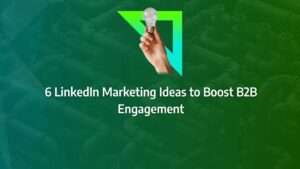Mastering the customer lifecycle is no longer optional—it’s essential. Imagine a scenario where your customers not only remain loyal but also actively advocate for your brand, driving sustainable growth. This transformation begins by understanding and optimising each stage of the customer lifecycle, from the initial awareness to becoming a brand advocate.
In this guide, you’ll discover actionable strategies for every stage, backed by data-driven insights, to help you elevate customer retention, boost satisfaction, and ultimately maximise your organisational success.
- Understand the B2B Customer Lifecycle: Start by thoroughly understanding each stage of the customer lifecycle—awareness, consideration, purchase, retention, and advocacy—to tailor your strategies effectively.
- Optimise Customer Retention: Implement proactive retention strategies like regular check-ins and loyalty programs to maintain customer satisfaction and reduce churn.
- Leverage Data and Analytics: Use data analytics to monitor key metrics such as customer lifetime value (CLV) and churn rates, enabling you to make informed adjustments to your lifecycle strategies.
- Integrate CRM Systems: Choose and integrate a CRM system that aligns with your lifecycle management needs, ensuring a unified view of customer data and personalised interactions.
- Address Lifecycle Management Challenges: Overcome common obstacles like data silos and inconsistent customer experiences by investing in data unification tools and cross-functional teams.
- Embrace Emerging Trends: Stay ahead by adopting emerging technologies like AI for predictive customer behaviour and blockchain for secure data management.
- Implement Practical Steps Immediately: Use the provided checklist to audit your current lifecycle management efforts and prioritise strategies that will deliver quick wins for your organisation.
What is the B2B Customer Lifecycle?
The B2B customer lifecycle refers to the various customer lifecycle stages a buyer moves through before, during, and after completing a transaction. This lifecycle maps the journey from initial awareness to purchase and beyond.
While the specifics of the B2B customer lifecycle can differ depending on the business or industry, there are five core stages that outline the relationship between a customer and a brand:
Reach
The reach stage is the initial phase of the customer lifecycle management process. Here, the objective is to ensure that your marketing materials and content are visible where potential customers are searching. Building awareness is key, and placing relevant content in strategic locations will help attract attention right from the start.
Acquire
Once potential customers are aware of your business, the next step is acquisition. This stage is more than just getting noticed; it involves delivering targeted content that resonates with your audience. Effective acquisition requires a deep understanding of your brand, the products you offer, and the characteristics of your target customer. By crafting personalised communication, you significantly increase the likelihood of converting a lead into a paying customer.
Develop and Nurture
After a customer’s first purchase, the develop/nurture stage is crucial in building a long-term relationship. This phase of the B2B customer lifecycle involves maintaining engagement by following up, ensuring satisfaction, and predicting future needs based on their previous buying behaviours. Gathering feedback during this stage is invaluable, as it not only helps fine-tune your offerings but also makes the customer feel valued—an important component of customer lifecycle management.
Retention
Retention is about keeping your customers engaged and satisfied so they continue to do business with you. Success in this stage requires ongoing communication, offering relevant content, and showing that you genuinely care about their experience. Leveraging customer feedback to improve your products or services demonstrates that their input matters, which fosters trust and increases the chances of repeat business.
Advocacy
The final stage in the B2B customer lifecycle is advocacy. At this point, loyal customers can become brand advocates. When customers feel deeply satisfied with your business, they are far more likely to recommend your products or services to their network. Word-of-mouth advocacy can significantly enhance your brand’s reputation, making it easier for potential leads to trust your business based on a satisfied customer’s recommendation.
What Matters Most?
Many companies discover that building a customer-driven growth engine is transformative for both product development and customer retention. They often realise that when customer insights directly shape their offerings, they can create lasting value and respond to evolving needs. Additionally, optimising for growth opportunities beyond retention—such as identifying key upsell moments—opens new revenue streams.Get In Touch
B2B Customer Lifecycle vs Customer Journeys vs Conversion Funnels
It’s common for terms like “lifecycle,” “customer journey,” and “conversion funnel” to be used interchangeably, but they describe different concepts within the marketing landscape. A customer journey is typically specific and always driven by the actions and choices of the customer. In contrast, the B2B customer lifecycle provides a broader, generalised framework created by the business, focusing on how a brand can guide customers through various stages of engagement.
While the B2B customer lifecycle shares similarities with a conversion funnel, there is a fundamental difference. The funnel is more linear, concentrating on acquiring and converting customers. However, the B2B customer lifecycle is a cyclical process that continues beyond the initial sale, encompassing ongoing relationships, repeat purchases, and customer advocacy.
By understanding and analysing each stage of the customer lifecycle management process, businesses can refine their approach to improve customer experiences, maximise retention, and turn satisfied customers into advocates for the brand.
Importance of Understanding the B2B Customer Lifecycle
Grasping the intricacies of the B2B customer lifecycle is pivotal to enhancing your company’s overall customer experience strategy. By dissecting the customer lifecycle stages, you can identify what is functioning effectively and where improvements are necessary. This enables businesses to continuously attract and retain customers.
Your current customer base is an invaluable source of insights. They are best positioned to provide direct feedback on their experiences, helping you address challenges in customer lifecycle management. To optimise this process, you must engage customers actively and respond to their needs based on the insights collected throughout their journey with your brand.
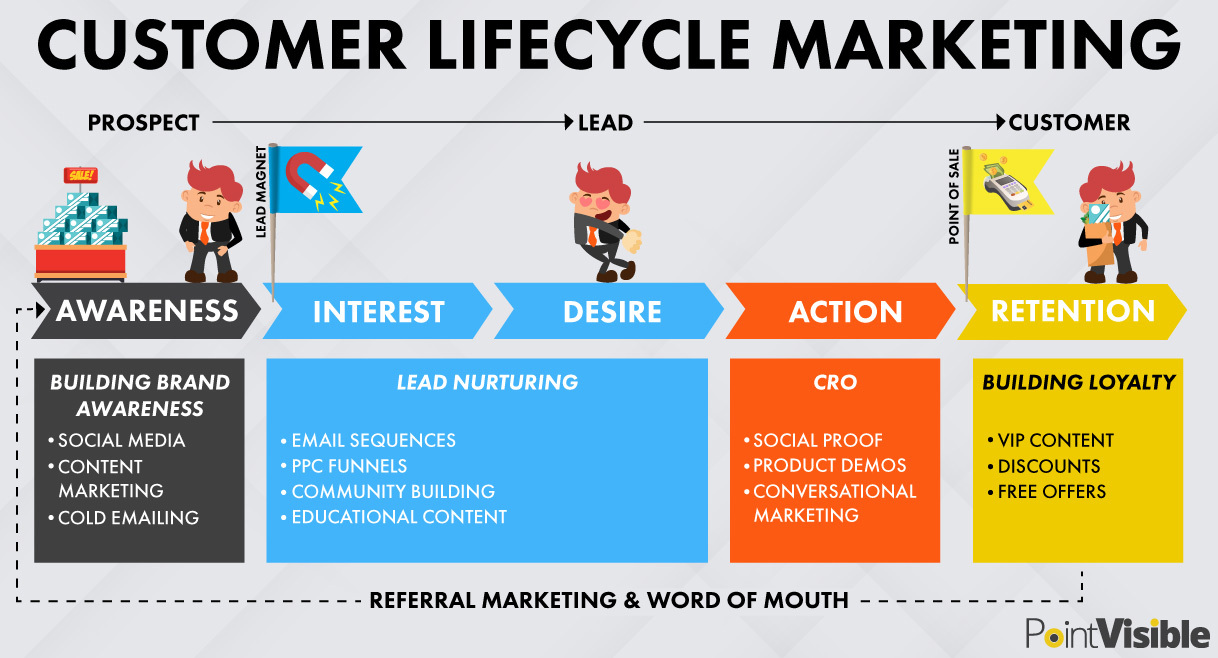
Analyse the Lifecycle as a Whole and in Parts
Begin by evaluating the B2B customer lifecycle holistically. By doing so, you can pinpoint where the majority of your customers are within the customer lifecycle stages and whether there are discernible patterns or trends in their movement between stages.
For instance, you may find that while most customers complete an initial purchase, retention rates beyond this point are low. With this insight, you can fine-tune your conversion and retention strategies to encourage repeat purchases and foster long-term relationships.
However, it’s equally crucial to analyse each customer lifecycle stage individually. Customer feedback gathered at various points in the journey provides actionable data on how you can enhance the overall experience. Acting on these insights at each stage of the lifecycle ensures continuous improvement and customer satisfaction.
Source: McKinsey
How can companies attract customers in the each stage of the customer lifecycle?
Managing the B2B customer lifecycle effectively requires more than just recognising the customer lifecycle stages. You must track data, analyse metrics, and apply insights from previous customer journeys to refine your strategy for future prospects.
Analysing the Reach Stage
In the reach stage, it’s vital to understand how potential customers are discovering your business. Examine when, where, and why prospects first encounter your brand. Are your advertising campaigns delivering the expected results? Are competitors succeeding in areas where your brand falls short? Moreover, ensure your brand maintains a solid reputation across all platforms.
Evaluating the Acquisition Stage
The acquisition stage centres on the tools and information available to prospective customers. Does your business provide valuable resources, such as a regularly updated blog or intuitive quoting tools? Is your content designed to attract and engage prospects? Additionally, your social media pages and websites must be easy to navigate to streamline the acquisition process.
Interpreting the Conversion Stage
At the conversion stage, the focus shifts to identifying any barriers preventing prospects from becoming customers. Is the purchasing process clear and user-friendly? Are there aspects of the journey that create friction, such as unclear refund policies or complex return processes? Simplifying these steps will improve conversion rates and ensure a smoother experience for your customers.
Scrutinising the Retention Stage
The retention stage is where businesses risk losing everything they’ve gained. At this point, it’s critical to understand how customers feel about their experience after making a purchase. Are they satisfied with your products or services? How can you personalise future interactions to retain their loyalty? Tailoring the customer experience at this stage can make all the difference in B2B customer lifecycle management.
Inspiring the Loyalty Stage
Building loyalty is one of the most challenging yet rewarding stages. Ensure your website and marketing emails include social sharing buttons so customers can easily recommend your brand to others. Consider implementing referral programmes that incentivise both existing customers and new prospects. Finally, offer personalised perks, such as exclusive discounts or special offers, to foster long-term loyalty.
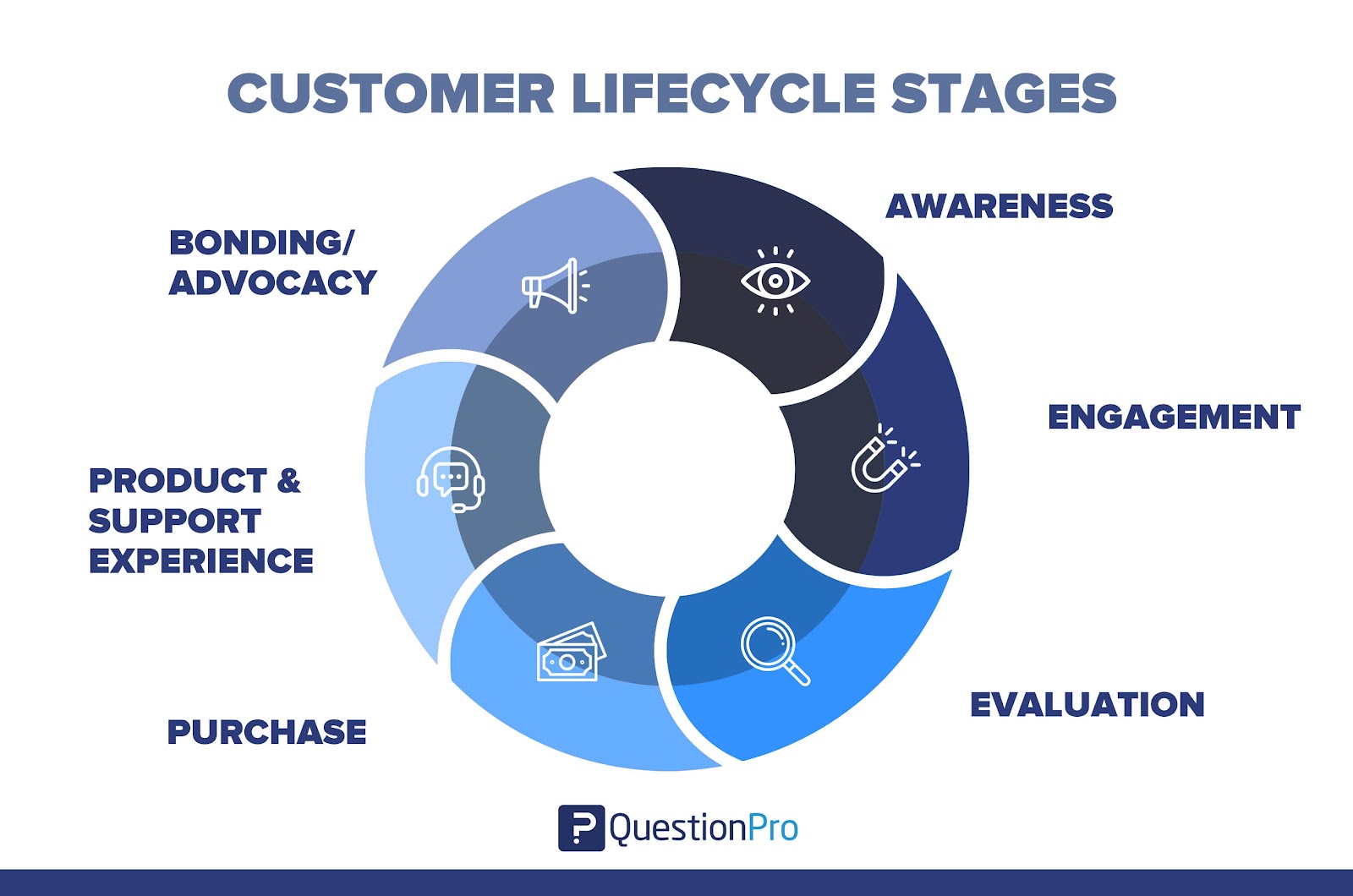
Tactics for Streamlining Your B2B Customer Lifecycle to Build Strong Brand Loyalty
Now, let’s explore eight best practices you can adopt to enhance your customer lifecycle management strategy and foster lasting brand loyalty.
1. Personalise the Customer Experience from the Start
Personalisation is key to driving customer success and improving retention, resulting in a smoother B2B customer lifecycle. According to a study by McKinsey, 76% to 78% of consumers are more likely to purchase, recommend, and make repeat purchases from companies that personalise their experiences.
In a SaaS context, this could involve tailoring features that appeal to a CMO while bypassing options that an engineer may find irrelevant.
How to implement it: To effectively personalise the customer experience, start by segmenting your user base and creating a tailored product experience for each segment. One method is to use a welcome survey to gather critical data, such as the user’s industry, their role within the organisation, or their primary motivations for using your product. From there, you can design an onboarding path that aligns with their specific jobs-to-be-done (JTBD) and responsibilities.
2. Enhance Customer Onboarding with Interactive Guidance
Interactive in-app guidance can significantly enhance the onboarding process, encouraging users to explore your product while improving their understanding and overall experience. Instead of relying on a generic product tour, implement progressive, interactive walkthroughs to guide users step by step.
How to implement it: Identify the core features most relevant to your users’ goals and use a no-code builder to create user-friendly UI patterns—such as tooltips, modals, and hotspots—that explain these features in context. Set these elements to activate when a customer engages with specific functions. For example, Groupize gamified their onboarding process by developing the Groupize Interactive Assistant, offering step-by-step guides, onboarding tours, live chat, and more to ensure a seamless onboarding experience.
3. Segment Existing Customers for Improved Lifecycle Management
Segmentation plays a crucial role in B2B customer lifecycle management. It allows you to tailor personalisation efforts while monitoring, analysing, and managing users at different lifecycle stages. Segments can be created based on criteria like demographics, in-app behaviour, or customer journey stage.
How to implement it: Start by selecting a tool such as Userpilot to manage customer segmentation. Then, define the criteria—whether it’s survey responses, behavioural data, or NPS scores—and build segments accordingly. For example:
- Target detractors from NPS surveys with personalised recovery campaigns.
- Re-engage users who skipped the onboarding process with a new, in-app tutorial flow.
- Track active free trial users and prompt an in-app upgrade message once they reach their usage limits.
4. Offer Self-Service Options to Enhance the Customer Experience
Self-service support gives users the autonomy to solve their issues at their own pace, improving the overall B2B customer lifecycle. By providing easily accessible resources, you prevent users from experiencing frustration and friction, leading to a more positive engagement with your product.
How to implement it: Implement an in-app resource centre that acts as a comprehensive repository for help content, such as FAQs, tutorial videos, and step-by-step guides. Identify the most common challenges that lead to user disengagement, and create content to directly address these issues. Organise your resources into modules, making it easy for users to find relevant information quickly.
5. Reward Loyalty Milestones
Recognising and rewarding customer loyalty is a powerful way to reinforce positive behaviour and keep customers engaged. By leveraging customer lifecycle management data, you can reward users for key milestones, whether that’s signing up for a loyalty programme, making a tenth purchase, or achieving a specific tier within a platform.
How to implement it: Use B2B customer lifecycle analysis to determine which rewards will be most valued by your audience. Tailor your loyalty initiatives to maximise customer satisfaction and create long-term engagement. Considering that 66% of consumers adjust their spending to optimise loyalty benefits, this strategy has the potential to significantly boost retention.
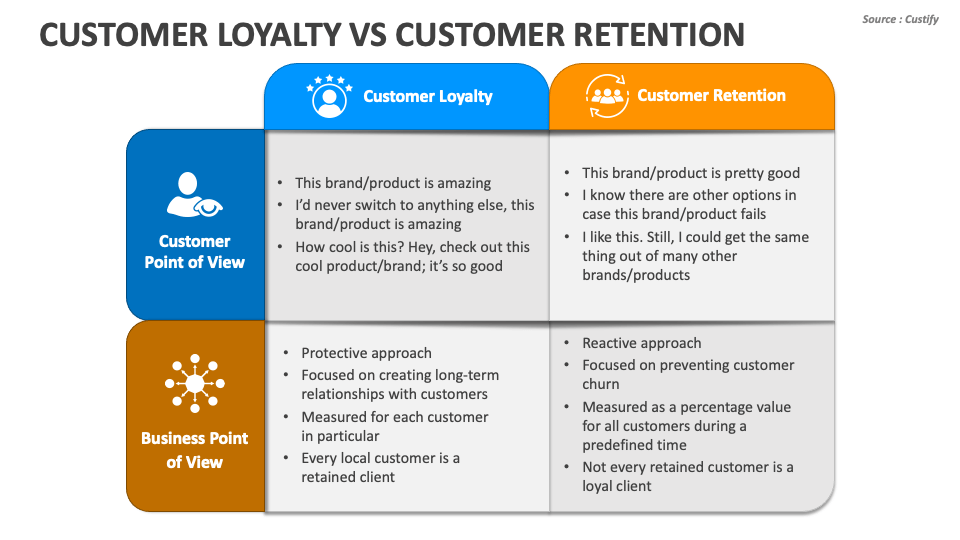
6. Focus on Customer Engagement
Engaged customers are proven to be more profitable, with research showing that they can be twice as valuable as disengaged users. Effective customer lifecycle management is critical for fostering this engagement, allowing you to nurture customers at every stage of their lifecycle and maintain long-term loyalty.
How to implement it: A strong example of engagement is Starbucks’ mobile app, which uses gamification elements like progress bars and achievement milestones. These motivate customers to track their progress and strive for higher tiers, deepening their connection to the brand.
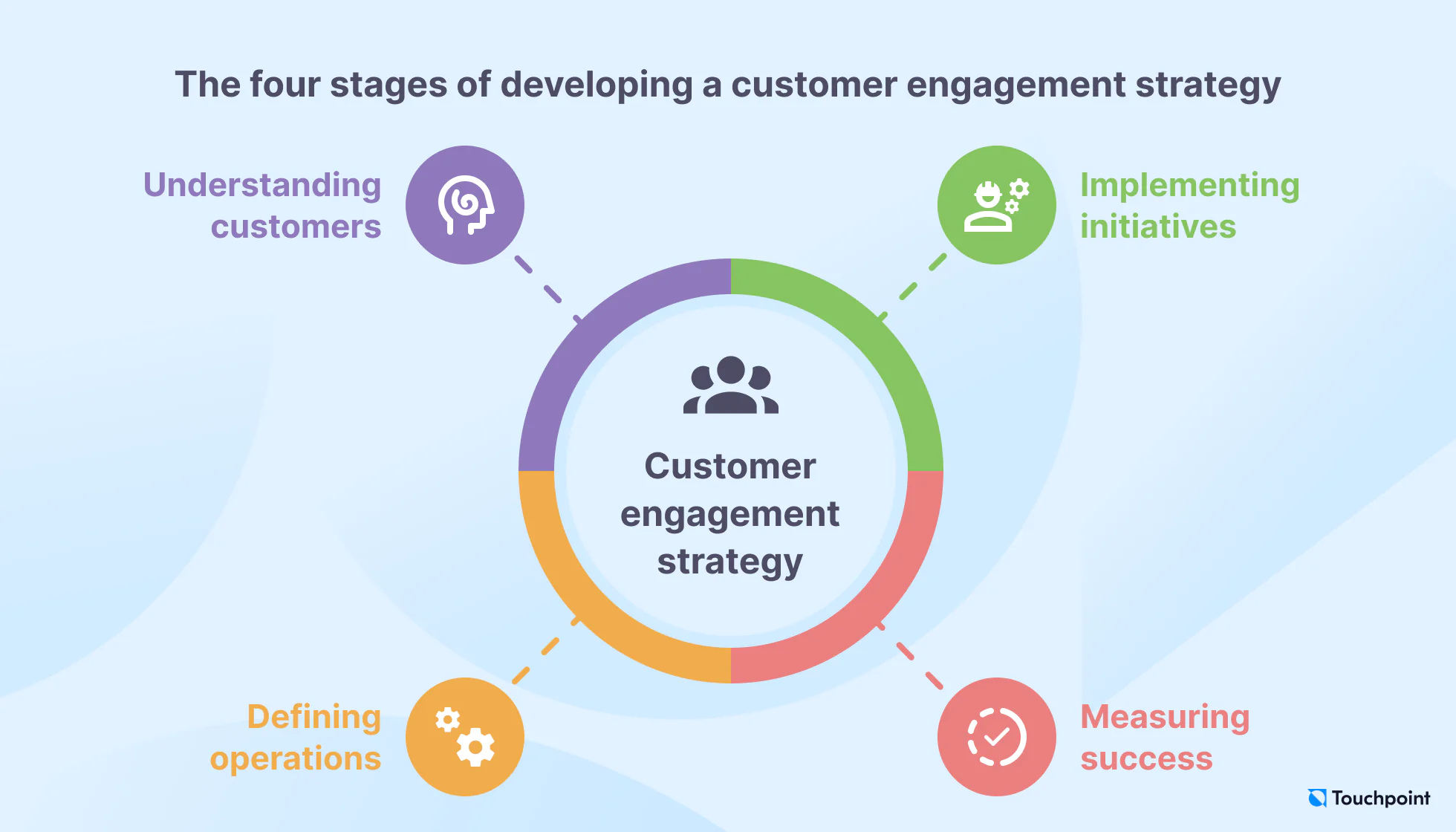
Our Tactical Recommendations
Many companies discover that building a customer-driven growth engine is transformative for both product development and customer retention. Clients often realise that when customer insights directly shape their offerings, they can create lasting value and respond to evolving needs. Additionally, optimising for growth opportunities beyond retention—such as identifying key upsell moments—opens new revenue streams. Finally, we often find that proactive customer success programmes are critical; these ensure that customers not only stay but thrive, by guiding them through every lifecycle stage and helping them fully realise the value of your solution.Get In Touch
Customer Lifecycle Tools for Building Trust and Enhancing Engagement
1. vcita
Trust is an essential factor in ensuring customers continue to engage with a business and make repeat purchases. Research shows that trust can increase purchases by up to 81%, making it a key driver in extending the B2B customer lifecycle.
To build trust, businesses need to focus on creating personal relationships with their clients and delivering consistent value at every touchpoint. The key to achieving this lies in three core principles:
- Provide value to customers before and after the sale.
- Treat every customer as an individual with unique needs.
- Communicate with customers like humans, avoiding generic, automated messages.
For smaller businesses and solopreneurs, these efforts can be challenging due to limited time and resources. Segmenting prospects, maintaining personalised communication, and reaching customers through their preferred channels all demand substantial effort. These challenges are compounded by the fact that affordable CRM tools with the necessary functionalities can strain tight budgets.
2. WotNot
A 2022 survey revealed significant changes in customer service expectations:
- 39% of customers report having less patience than before the pandemic.
- 43% express frustration with long hold times.
- 53% have publicly criticised companies for poor service.
Substandard customer service leads to higher churn rates and lower retention, which can damage your customer lifecycle management. Businesses, particularly freelancers and small enterprises, often lack the manpower to provide round-the-clock service.
WotNot offers a cost-effective solution with automated customer service through chatbots. With 24/7 availability, these chatbots can manage everything from initial inquiries to resolving issues across different languages and channels. By keeping all communications in one place, businesses can streamline the B2B customer lifecycle across the reach, acquisition, and retention phases, ultimately improving customer satisfaction and loyalty.
3. Tribe
Research into branded communities has highlighted their impact:
- 68% of businesses report more leads from their community.
- 55% say it has boosted sales.
- 66% see improved customer retention.
Branded communities have a profound effect on extending the B2B customer lifecycle, particularly by encouraging customer advocacy and long-term engagement. However, building and managing such communities can be resource-intensive, often requiring additional staff for moderation and technical management.
Tribe provides a scalable solution for building bespoke communities where visitors, prospects, leads, and customers can engage in meaningful discussions. By nurturing these communities, businesses can gain qualitative insights into customer needs and behaviours, while simultaneously tracking the progress of customers through various customer lifecycle stages.
